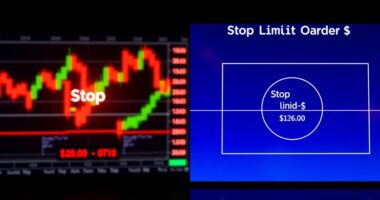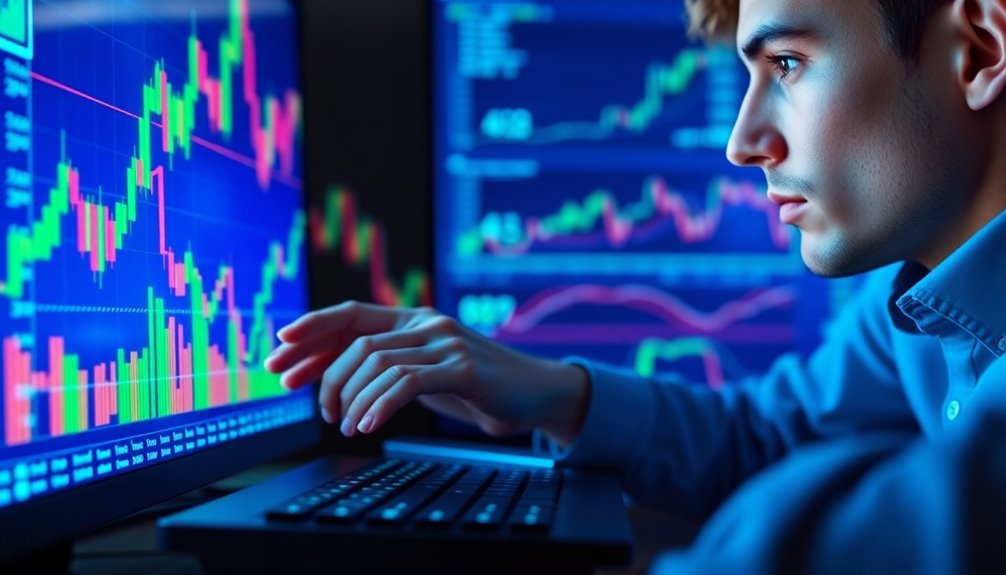Perpetual futures are unique financial instruments that let you trade indefinitely, as they don't have expiration dates. This flexibility allows for various speculative strategies and high leverage options, meaning you can control larger positions with less capital. The prices are maintained through a funding rate mechanism, which operates every eight hours, aligning prices with the market. While they offer high liquidity and quick trading, they also come with risks like increased liquidation chances due to high leverage. If you're curious about funding rates and what makes them so appealing, there's much more to uncover about perpetual futures.
Key Takeaways
- Perpetual futures are financial instruments that allow indefinite trading without expiration dates, providing flexibility for traders.
- They utilize a funding rate mechanism every eight hours to align contract prices with underlying spot prices.
- Traders can employ high leverage options, enabling control of larger positions with less capital investment.
- Perpetual futures are popular among speculators due to their high liquidity and adaptability in trading strategies.
- Unlike traditional contracts, perpetual futures settle in cash and do not have fixed expiration dates.
Key Features Overview
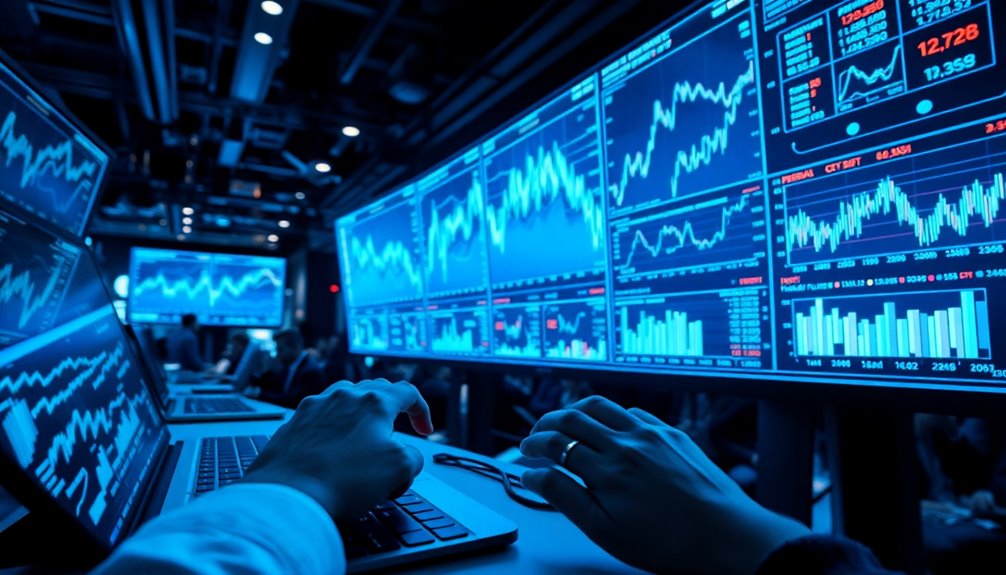
Perpetual futures are a unique financial instrument designed for traders who want to speculate on asset prices without worrying about expiration dates. These derivative contracts allow you to trade crypto continuously, providing the flexibility to hold positions indefinitely.
A key feature is the funding rate mechanism, which operates every eight hours, ensuring the prices of perpetual futures align with the spot prices of the underlying asset. You can utilize high leverage, enabling you to control larger positions with lower capital, amplifying both potential profits and losses.
Additionally, the absence of expiration dates means you can employ various speculative strategies while adhering to margin requirements, making perpetual futures an attractive choice for traders seeking flexibility and efficiency in the market.
Market Growth and Innovation

The rise of perpetual futures has sparked remarkable growth in the cryptocurrency derivatives market. In 2022, median daily trading volumes reached around $101.9 billion, showcasing the increasing popularity of these financial instruments.
With heightened institutional interest, perpetual futures now dominate derivatives trading, reflecting broader acceptance in cryptocurrency markets. This boom enhances liquidity and fosters volatile trading, attracting investors eager to employ speculative strategies or hedge risks.
However, as the market expands, regulatory scrutiny is intensifying. Authorities are closely examining trading practices surrounding perpetual futures to ensure consumer protection and maintain market integrity.
Ultimately, this growth and innovation signal a transformative era for cryptocurrency derivatives, creating new opportunities and challenges for traders like you.
Funding Rate Dynamics Explained
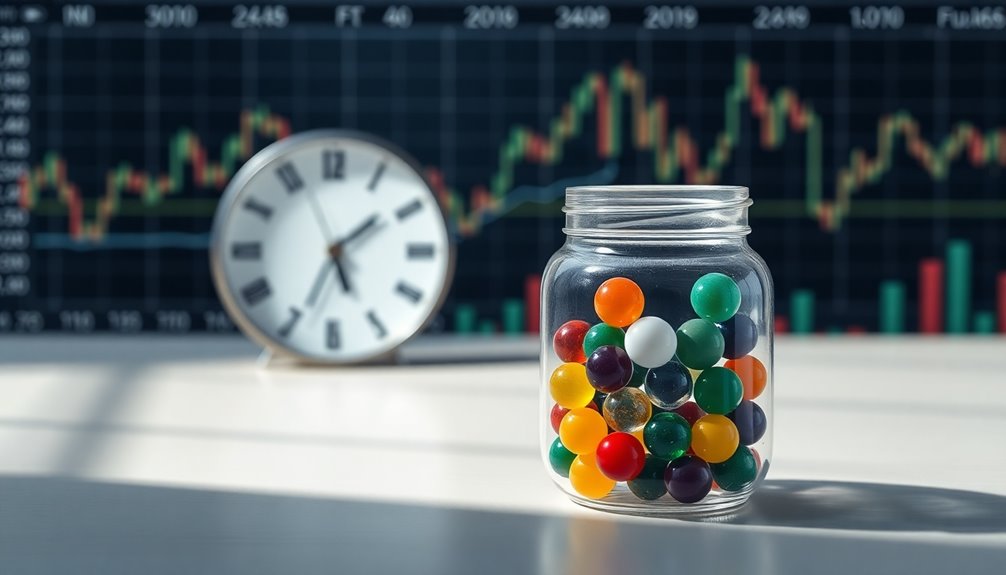
Understanding funding rates is essential for anyone trading in perpetual futures, as these rates play a pivotal role in determining the cost of holding positions.
The funding rate is a periodic fee exchanged between long and short positions, ensuring the contract price stays close to the spot price. When the funding rate is positive, long position holders pay short position holders, and when it's negative, the opposite occurs.
These rates fluctuate based on market demand and trader sentiment, significantly impacting your profitability. High positive funding rates can erode profits for long positions, while high negative rates can diminish profits for short positions.
Being aware of these dynamics helps you strategize effectively and avoid liquidation risks.
Pros and Cons Summary

Trading in perpetual futures comes with its own set of advantages and drawbacks that can significantly impact your strategy.
On the plus side, these contracts offer flexibility, allowing you to hold positions indefinitely and benefit from high liquidity for quick trades.
However, the high leverage can amplify both profits and losses, increasing the risk of liquidation, especially during volatile price movements.
Additionally, understanding funding rates is crucial, as they can affect your profitability and create challenges for less experienced traders.
Lastly, the largely unregulated nature of perpetual futures raises concerns about market manipulation, potentially leading to unpredictable price fluctuations and emotional trading decisions.
Weighing these pros and cons is essential for successful trading.
Perpetual vs. Traditional Contracts
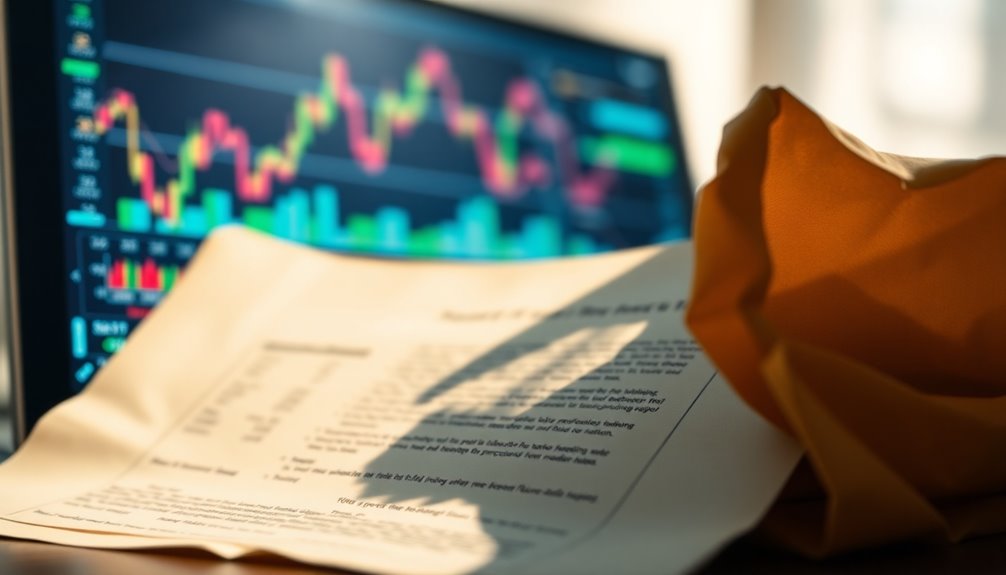
While both perpetual futures and traditional contracts serve the purpose of facilitating speculation and hedging, they differ significantly in structure and functionality.
Perpetual futures have no expiration date, allowing you to hold positions indefinitely, while traditional futures contracts require settlement by a defined expiration date.
The pricing of perpetual futures is maintained through a funding rate mechanism, ensuring alignment with the market price of the underlying asset, whereas traditional futures rely on market supply and demand.
In crypto trading, perpetual futures enable high leverage and continuous trading, typically settling in cash, unlike traditional contracts that can settle physically or in cash. This allows traders to capitalize on price movements without needing to hold the underlying asset, making it a popular choice for speculators. Additionally, futures trading in cryptocurrency offers the potential for significant profits, but it also comes with increased risks due to the volatility of the market. As a result, traders must employ careful risk management strategies to navigate the complexities inherent in these financial instruments.
Additionally, funding rates for perpetual contracts can fluctuate, impacting your holding costs, unlike the more static carrying costs of traditional futures.
Volatility and Market Unpredictability

Market volatility can significantly impact your experience with perpetual futures, often leading to price swings that exceed 10% in just one day, especially in the crypto space.
This volatility, combined with high leverage, can amplify risks, resulting in rapid liquidations of over-leveraged positions. The funding rate mechanism can further complicate things, as sudden changes every eight hours can lead to unexpected losses.
During turbulent times, trading volumes can surge, sometimes exceeding $100 billion, showcasing increased risk appetite. However, this unpredictability also creates arbitrage opportunities for savvy traders.
To navigate these challenges effectively, you need strong risk management strategies that account for market volatility and aim to protect your investments from sudden price shifts.
Emerging Trading Platforms

How have emerging trading platforms transformed the landscape of perpetual futures? Since their inception around 2018, platforms like Binance and Bybit have enhanced market accessibility and provided high liquidity, making it easier for you to trade.
With leverage options ranging from 2x to 100x, you can maximize your returns on these financial instruments. User-friendly interfaces and mobile apps have drawn in retail traders, further expanding the market.
Innovative features like automated trading bots and social trading let you replicate successful strategies, increasing your chances of success. Additionally, decentralized exchanges like dYdX and Perpetual Protocol offer a trustless environment, enhancing security and reducing dependence on centralized entities.
This evolution is reshaping how you engage with perpetual futures.
Use Stop-Loss Orders Effectively
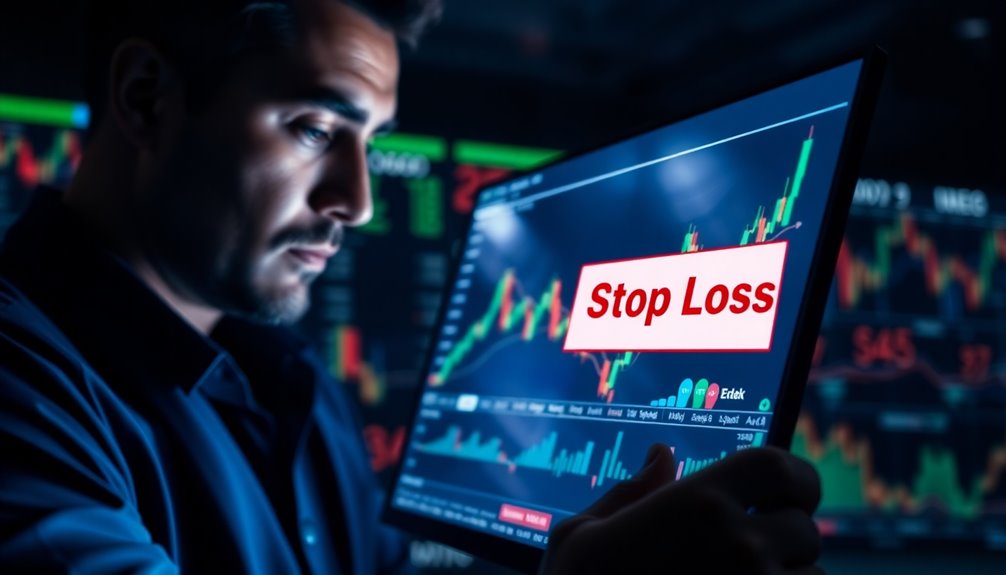
Emerging trading platforms have made it easier for you to engage in perpetual futures, but as you explore these opportunities, managing risk becomes vital.
Stop-loss orders are essential tools that automatically sell your position when the asset hits a specified price, helping limit losses amid market volatility.
Be cautious, though; setting these orders too close to the market price might trigger them due to normal price fluctuations.
Consider using trailing stop-loss orders to capture profits while protecting against downturns.
Remember, the effectiveness of stop-loss orders can be affected by the funding rate and rapid price changes.
Regularly review and adjust your stop-loss levels based on market conditions and your risk tolerance for effective risk management in perpetual futures trading.
Frequently Asked Questions
How Do Perpetual Futures Work?
Perpetual futures let you trade assets without worrying about expiration dates. You can hold your position as long as you want, but you'll need to manage your margin carefully to avoid liquidation.
Every eight hours, a funding rate is applied, which adjusts based on market conditions. You'll pay or receive these fees depending on whether you're holding a long or short position. This dynamic keeps the contract price in line with the underlying asset.
What Is the Difference Between Standard Futures and Perpetual Futures?
When you compare standard futures and perpetual futures, you'll notice key differences that impact your trading strategy.
Standard futures have a set expiration date, while perpetual futures let you hold positions indefinitely.
Standard futures settle either physically or financially, whereas perpetual futures settle in cash.
You'll also find that perpetual futures often offer higher leverage, increasing both your potential gains and risks.
Ultimately, your choice depends on your trading goals and style.
Do You Pay Funding on Perpetual Futures?
Yes, you do pay funding on perpetual futures.
These fees are based on the funding rate, which changes according to market conditions and is typically applied every eight hours.
If the funding rate is positive, you'll pay short positions, while a negative rate means shorts pay you.
It's crucial to monitor these rates closely, as they can significantly impact your profits or losses, influencing your overall trading strategy and outcomes.
Are Perpetual Futures Cash Settled?
You might wonder if perpetual futures are cash settled, and the answer is yes, they generally are.
This cash settlement means you won't have to deal with the hassle of physically delivering assets when closing your contracts. Instead, you realize your profits or losses based on the price difference at closing.
This mechanism streamlines your trading experience, allowing you to jump in and out of positions quickly without the complexities of physical transfers.
Conclusion
In conclusion, perpetual futures offer a flexible trading option that's reshaping the market landscape. Did you know that in 2021 alone, the trading volume for perpetual contracts exceeded $1 trillion? That's a staggering figure that reflects the growing interest and potential of these instruments. While they come with risks, understanding their dynamics can lead to smarter trading decisions. So, stay informed and consider how you can leverage perpetual futures in your strategy!


